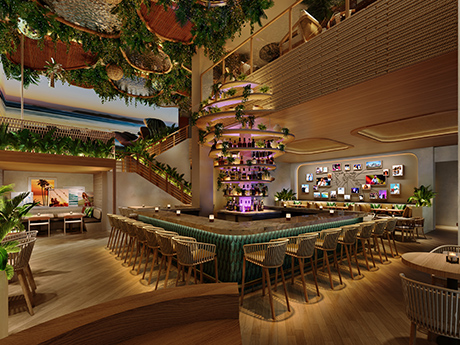By Lindy Beyer and Matt Rau, CBRE
Kansas City is a special place. We have long been known for our renowned barbecue, jazz and most recently, as the city where Taylor Swift’s fiancé works. Retail is at the core of our city, attracting visitors from all over the world to experience our city’s welcoming and rich culture.
As the metro area has grown, so has the retail market. We are currently experiencing a period of robust growth, fueled by a combination of strong suburban demand, exciting new mixed-use developments and the appeal of big box vacancies. Sports have been an additional driver as the city continues to invest in its athletic and entertainment offerings. These venues attract large crowds — generating foot traffic and boosting sales for nearby retailers.

Retail occupancy rates in Kansas City have increased from 93 percent to 95.1 percent in the last five years, showing the strong overall demand in the market. This is especially notable as there have been over 2.6 million square feet of new retail space delivered over that same time frame, with a large portion contained in mixed-use developments.
Overall growth in the Kansas City submarkets has triggered a higher demand for suburban retail. The strong market fundamentals in these areas, including their highly regarded school systems, lower costs of living and pro-development municipal governments, have led to a large population growth. This creates an environment ripe for retail expansion and consumer spending.

In Lee’s Summit on the Missouri side, the retail availability rate has decreased from 6.7 percent to 4.9 percent in the last five years — a 180-basis-point drop. In Merriam on the Kansas side, the availability rate is at a historic low of 0.8 percent.
This strikingly low vacancy indicates hyper-competitive retail markets, and developers are responding accordingly with over 358,000 square feet delivered in Lee’s Summit and 127,000 square feet in the land-constrained Merriam trade area in the last five years.
Developers are increasingly focusing on large, mixed-use projects that integrate retail and entertainment with residential and office components. Kansas City has seen an increase in multifamily development in conjunction with retail, which further adds to the “live-work-play” dynamic that the city is moving toward.
The demand for retail pads (small, individually leased buildings within a larger commercial development) along high-traffic roads remains high. These locations provide convenience and accessibility for consumers, particularly those looking for quick stops or essential services. It also allows for a diverse mix of retailers, making shopping centers a true “one-stop shop.”
While there is a lot of exciting new development, retailers depend on existing product to open their stores quickly. Big box vacancies have been paramount to suburban retail leasing, following large vacancies left by retailers who have closed or are downsizing, like JoAnn Fabrics, Big Lots and Office Depot/Max. These spaces are ideal for junior box tenants in the market that are rightsizing their footprints along with family entertainment concepts that have flexibility in their design and layout.
As Kansas City has grown, retail has evolved to keep up. Retail is thriving throughout the city and suburbs, offering a compelling opportunity for developers and investors to continue to build in the region. The future is bright for Kansas City retail.
Lindy Beyer and Matt Rau are vice presidents with CBRE. This article originally appeared in the September 2025 issue of Heartland Real Estate Business magazine.


